When someone mentions Bulldogs, I often imagine those lovable, lumbering giants with their distinctive waddles and soulful gazes. Yet, there’s a delightful surprise in the bulldog family—the Mini Bulldog. This breed brings all the character and charm of the standard bulldog into a smaller, irresistibly cuddly package. It’s as if nature itself decided to compress joy, resilience, and affection into a compact form, creating a pint-sized companion that captures hearts with ease.
This tiny champion stands as a testament to the idea that great things indeed come in small packages. With every snort and playful tumble, the Miniature Bulldog redefines what it means to be a bulldog, embodying the breed’s hallmark traits in a body that makes them even more accessible and adorable. In my journey through the world of dogs, the Miniature Bulldog emerges as a unique blend of tenacity and tenderness, proving that sometimes, less really is more.
TABLE OF CONTENTS
- Mini Bulldog Quick Breed Summary Table
- What Is a Miniature Bulldog?
- Origin of the Mini Bulldog
- Mini Bulldog Physical Appearance
- Temperament of Mini Bulldogs
- Taking Care of Mini Bulldogs
- How to Train a Miniature Bulldog
- Health Issues in Miniature Bulldogs
- Costs of Miniature Bulldog Ownership
- FAQs: More About Mini Bulldogs
- So, Is the Mini Bulldog Right for You?
Mini Bulldog Quick Breed Summary Table
What Is a Miniature Bulldog?
From Adobe Stock
The Mini Bulldog is a charming crossbreed, a unique blend of a purebred English Bulldog and a Pug.
Unlike the English Miniature Bulldog or Toy Bulldog, which are essentially smaller versions of the purebred English Bulldog achieved through selective breeding, the Mini Bulldog emerges from the designer dog trend. This movement saw purebreds intentionally crossed to create offspring with specific looks, characteristics, and purposes. The aim with the Mini Bulldog was to craft a calm and loyal pet, one that thrives in the company of humans and excels as a companion.
Characterized by its small to medium size, the Mini Bulldog is prized for its serene nature and profound attachment to its human family, embodying the ideal traits of a companion pet. However, it’s crucial to recognize that as a crossbreed, the Miniature Bulldog does not enjoy pedigree status from institutions like the American Kennel Club or the Kennel Club in the UK.
Despite the lack of formal pedigree recognition, several organizations acknowledge the Miniature Bulldog. These include the American Canine Hybrid Club, Designer Dogs Kennel Club, and Dog Registry of America. These groups appreciate the crossbreed for its unique combination of traits, recognizing its value in the canine community.
As the Miniature Bulldog is quite a recent addition to the dog world, there are no breed-specific rescue organizations or an official breed club. However, for enthusiasts and prospective owners, social media groups provide a vibrant community for sharing tips, stories, and advice. Moreover, animal shelters often have similar small and sweet-natured crossbreeds and purebreds, offering a chance to adopt a needy dog and provide it with a loving home.
Origin of the Mini Bulldog
For a better understanding of the mini bulldog’s history, let’s look back at the origins of its parent traits. Doing so will also give us an idea of why it is what it is.
The English Bulldog
From Adobe Stock
The English Bulldog’s journey from a fierce competitor in the blood-sport of bull-baiting to a beloved household pet is a testament to the breed’s resilience and adaptability.
Originating in England, these dogs were initially bred and trained for bull-baiting, a sport where dogs were pitted against a tethered bull in a fight for survival.
The breed was valued for its courage, tenacity, and muscular build, traits that made it well-suited for the rigors of the arena.
However, with the ban on bull-baiting in the early 19th century, the need for these aggressive traits diminished. Breeders began to select for more docile characteristics, focusing on the Bulldog’s capacity for loyalty, patience, and companionship. This marked a pivotal shift in the breed’s development, transitioning from the arenas of old to the living rooms of families seeking a gentle and affectionate pet.
This transformation of the English Bulldog is reflective of a broader societal shift away from animal cruelty and towards a more compassionate relationship with our canine companions.
Today’s Bulldog retains the physical robustness of its ancestors but has a temperament that is markedly more placid and amiable. They are characterized by their loose, wrinkled skin; stocky, muscular frame; and distinctive pushed-in nose.
The Pug
From Adobe Stock
The Pug’s history is steeped in luxury and royalty, originating from the imperial courts of ancient China. These dogs were treasured by Chinese emperors and often lived in lavish accommodations, complete with their guards.
The Pug’s journey from East to West is a story of enduring appeal and adaptability. By the 16th century, trading ships from the Dutch East India Company brought the first Pugs to European shores, where they quickly endeared themselves to Western royalty.
Their compact size, sociable nature, and distinctive appearance made Pugs highly sought after by nobles and kings across the continent.
The Pug’s enduring charm lies in its expressive, human-like facial features and its outgoing, affectionate personality. With a short, curled tail and a glossy coat, Pugs possess a unique aesthetic that sets them apart from other breeds. Their deep, round eyes and wrinkled brows give them an almost comical expression, full of personality and emotion.
Creation of the Miniature Bulldog
The inception of the Miniature Bulldog is a modern tale of breed innovation, stemming from the desire to blend the distinguishing characteristics of the English Bulldog with the playful, compact nature of the Pug. This endeavor is part of a larger trend towards designer dogs, a movement that seeks to combine the best traits of purebreds to create hybrids that meet the specific desires of pet owners.
In the late 20th and early 21st centuries, the demand for smaller, more adaptable pets for urban living contributed significantly to the popularity of breeds like the Miniature Bulldog.
Breeders focused on achieving a balance between the Bulldog’s sturdy, loyal nature and the Pug’s spirited, affectionate demeanor. The goal was to produce a dog that maintained the physical robustness and friendly disposition of the Bulldog, while incorporating the Pug’s size and playful charm.
The result is the Miniature Bulldog, a hybrid that embodies the best of both breeds: loyalty and calmness from the Bulldog, alongside the Pug’s sociability and adaptability. This blend of traits makes the Miniature Bulldog an ideal companion, particularly suited to those seeking a smaller, less demanding pet that still offers the companionship and presence of its larger Bulldog ancestor.
Mini Bulldog Physical Appearance
Diving into the world of Miniature Bulldogs, we uncover a fascinating blend of traits that make them stand out in the canine crowd.
Height and Weight
When it comes to size, Mini Bulldogs are the perfect middle ground. They typically stand about 12 to 16 inches tall at the shoulder, striking a balance that makes them neither too large nor too small.
Their weight, ranging from 20 to 45 pounds, further emphasizes its miniature body.
It’s a manageable size that suits both apartment living and homes with a bit more space. I always marvel at how they embody robustness in such a compact frame, a testament to their Bulldog heritage.
Coat and Color
Mini Bulldogs sport a coat that’s short, smooth, and easy to care for, a feature I find particularly appealing as someone who’s always juggling responsibilities. Their grooming needs are minimal, making them a great choice for busy pet parents.
The variety in their coat colors is nothing short of a palette taken straight from their ancestors, including brindle, white, fawn, and combinations thereof. Each Mini Bulldog seems to wear its coat with a unique flair, reflecting a wide range of personalities within the breed.
Other Physical Features
What truly sets Mini Bulldogs apart are their distinctive physical features. They inherit the Bulldog’s muscular build and distinctive pushed-in nose, alongside the Pug’s expressive, wide-set eyes. This combination gives them a look of constant curiosity and eagerness.
Their ears can either take after the Bulldog’s rose ears or the Pug’s button style, adding to their charm.
The tail often curls, reminiscent of the Pug’s, adding a playful twist to their appearance.
Observing these dogs, I can’t help but be drawn to their expressive faces. There’s a depth of character in their eyes that suggests an old soul, yet their playful antics reveal a youthful spirit.
Temperament of Mini Bulldogs
From Adobe Stock
Mini Bulldogs are as charming in personality as they are in appearance. Let’s delve into what makes their temperament so special.
Friendly and Affectionate
First off, these little dogs are incredibly friendly. They thrive on human companionship, always eager to be by your side. Whether you’re lounging on the couch or out for a walk, expect them to be your loyal shadow. Their affectionate nature is heartwarming. Mini Bulldogs form strong bonds with their families. It’s like they have an endless supply of love to give.
Calm Yet Playful
Despite their playful streak, Mini Bulldogs possess a calm demeanor. They’re not the type to bounce off the walls. Instead, they prefer a good cuddle session. But don’t let their tranquility fool you. They still enjoy playtime and can be quite spirited when the mood strikes. It’s this balance that makes them ideal companions for both active and relaxed lifestyles.
Great With Kids and Other Pets
Mini Bulldogs are known for their patience, making them fantastic with kids. They’re gentle and know how to play safely. This patience extends to other pets as well. They’re usually quite good at making furry friends. Their sociable nature makes them a great addition to families with other animals.
From my own experience with dogs, I can say that a temperament like the Mini Bulldog’s is a gem. Their blend of affection, calmness, and sociability is something that not only appeals to pet lovers but also makes them a perfect fit for a variety of households.
Whether you’re a single individual or part of a bustling family, a Mini Bulldog could be the companion you’ve been looking for.
Taking Care of Mini Bulldogs
From Adobe Stock
Caring for Mini Bulldogs involves a bit more detail, especially when it comes to their diet, grooming, and exercise. I’d say it’s quite easy, but you need to be proactive.
Feeding
I usually recommend a high-quality dry kibble designed for small breeds, as it’s formulated to meet their specific nutritional needs.
Look for foods that list real meat as the first ingredient, ensuring your pup gets plenty of protein. Essential fatty acids, like omega-3 and omega-6, are also key for a healthy coat and skin.
Incorporating some wet food can provide variety and additional hydration.
Be mindful of their calorie intake; obesity is a common issue in less active breeds.
Puppies should eat three to four times a day, transitioning to twice-daily feedings as they mature.
Always have fresh water available, and consider consulting with your vet to tailor the diet to your dog’s specific needs.
Grooming
Their short coat requires minimal brushing, but don’t let that fool you. Weekly brushing helps remove dead hair and distribute natural oils, keeping their coat shiny and healthy.
Those distinctive wrinkles need regular cleaning to prevent bacterial infections; a soft, damp cloth can do the job.
Pay attention to their nails, which should be trimmed regularly to avoid discomfort and mobility issues.
Ear cleaning and dental care are also paramount. Ears should be checked weekly for signs of infection, and teeth brushed daily with dog-specific toothpaste to prevent dental disease.
Establishing a grooming routine early on can make these tasks easier for both you and your Mini Bulldog.
Exercise
While Mini Bulldogs may not require the exercise levels of a high-energy breed, they still need regular physical activity to stay healthy and prevent boredom.
Daily walks are essential, but keep them short and sweet to avoid overexertion, especially in hot weather. Mini Bulldogs are prone to respiratory issues, so it’s important to monitor their breathing during exercise.
Playtime is another great way to keep them active; interactive toys can stimulate their mind and satisfy their play instincts.
Remember, exercise is not just about physical health but also about mental well-being. Finding the right balance of activity will keep your Mini Bulldog happy and prevent behavior issues.
How to Train a Miniature Bulldog
The training journey with a Miniature Bulldog is an adventure full of both challenges and triumphs. These compact companions, with their amiable personalities and occasional stubborn streaks, require a thoughtful approach to learning. Miniature Bulldogs are a little stubborn. This can sometimes make training a little tricky.
Understanding Their Personality
Mini Bulldogs, with their mix of English Bulldog and Pug lineage, bring a delightful combination of traits to training. Observing their calm yet playful nature has always highlighted the importance of patience and understanding. Their inclination for companionship makes them eager to please, an asset in any training regimen.
Emphasizing Positive Reinforcement
In my conversations with veterinarians and fellow dog lovers, the efficacy of positive reinforcement is a constant highlight. Rewarding good behavior with treats, praise, or playtime not only fosters a positive learning environment but also strengthens the bond between you and the dog. It’s about encouraging their natural desire for social connection.
Keeping Sessions Short and Engaging
Given their compact size and moderate energy levels, Mini Bulldogs benefit from shorter, more engaging training sessions. This approach prevents them from becoming overtaxed and keeps their attention focused. Integrating play into learning makes the process enjoyable for them, reinforcing their motivation to participate.
Consistency Across the Board
Consistency, as I’ve learned through my job, is crucial for any breed. For Mini Bulldogs, this means using the same commands and rewards to establish clear expectations. Consistency across all family members and environments helps reinforce these lessons, making training more effective.
Tackling Stubbornness with Creativity
While volunteering, I’ve seen my fair share of stubborn dogs, and Mini Bulldogs can exhibit this trait too. Overcoming this requires creativity—finding what motivates them and using it to guide learning. Sometimes, a new toy or changing the training environment can provide the novelty needed to capture their interest.
Expanding Beyond Basic Commands
Engaging a Mini Bulldog’s mind is as important as physical exercise. Introducing tasks that challenge them mentally, from puzzle toys to new commands, keeps training fresh and stimulating. It’s about tapping into their curious nature and providing outlets for their intelligence.
Health Issues in Miniature Bulldogs
From my background in animal science and working closely with various breeds, I’ve learned the importance of recognizing early signs and taking preventive measures.
Brachycephalic Syndrome
One condition that often catches the attention of Mini Bulldog owners is Brachycephalic Syndrome. This is directly linked to their charming, yet anatomically compact, facial structure, leading to narrowed airways. Symptoms include distinctive snoring, difficulty breathing, and intolerance to exercise, especially in warm weather or after exertion.
- Create a cool, comfortable living environment to prevent overheating.
- Opt for leisurely walks during cooler parts of the day.
- Regularly monitor their breathing and consult a vet if issues arise.
Hip Dysplasia
Despite their small stature, Mini Bulldogs are not immune to Hip Dysplasia, a hereditary condition that affects the fit of the hip joint, leading to arthritis or discomfort. Observing your pet for signs of discomfort while walking or reluctance to play can be early indicators.
- Incorporate low-impact exercises to strengthen muscles without straining joints.
- Keep an eye on their diet to avoid weight gain, which can exacerbate the condition.
- Explore options like physiotherapy or acupuncture after consulting with your veterinarian.
Skin Infections
The charming wrinkles of a Mini Bulldog can unfortunately be breeding grounds for bacteria, leading to skin infections. Signs include redness, itchiness, and a noticeable odor emanating from their skin folds.
- Establish a routine of gently cleaning and drying their skin folds to remove moisture and debris.
- Consult with a vet for recommended skincare products tailored to sensitive skin.
- Regular check-ups can help catch any infections early before they become more serious.
Obesity
A less visible but equally serious concern is obesity, which can sneak up on Mini Bulldogs due to their propensity for less activity and their owners’ tendency to overindulge them with treats. Excess weight can lead to or aggravate health issues like diabetes, joint problems, and respiratory difficulties.
- Stick to a nutritionally balanced diet, and be mindful of calorie intake.
- Engage your Mini Bulldog in daily play and exercise to keep them active.
- Regular weight checks can help track progress and adjust food intake as needed.
Eye Problems
Lastly, the expressive eyes of Mini Bulldogs are susceptible to conditions like cherry eye, entropion, or dry eye, indicated by redness, swelling, or excessive blinking.
- Keep their eyes clean and clear of debris with gentle wipes.
- Protective eyewear can be considered during outdoor activities.
- Prompt veterinary examination for any signs of eye distress can prevent long-term damage.
Costs of Miniature Bulldog Ownership
Owning a Mini Bulldog, while rewarding, comes with its unique set of financial considerations. From my experience and research, I’ve gathered that the initial cost is just the tip of the iceberg. Let’s break down the various expenses you’ll likely encounter, making this journey both joyous and financially manageable.
Initial Purchase Price
First off, the purchase price of a Mini Bulldog can vary widely based on lineage, breeder reputation, and location. Typically, you’re looking at a range from $1,500 to $4,000. This upfront cost reflects the breed’s popularity and the care taken by reputable breeders to ensure healthy, well-socialized puppies.
Veterinary Care
Routine veterinary care is a cornerstone of responsible pet ownership. For a Mini Bulldog, initial vaccinations, spay/neuter procedures, and regular check-ups can add up. Annually, setting aside $500 to $1,000 for basic vet visits is a prudent estimate. Additionally, given their predisposition to certain health issues, a pet health insurance policy might be worth considering, with premiums typically ranging from $30 to $50 per month.
Feeding
The diet of a Mini Bulldog is pivotal to its health and well-being. High-quality dog food that meets their nutritional needs can cost around $40 to $80 per month. This expense can vary based on the dog’s size, age, and any special dietary requirements.
Grooming
Though their grooming needs are not as demanding as some breeds, Mini Bulldogs do require regular care to keep their skin and coat healthy. Budgeting for professional grooming sessions (ranging from $30 to $60 per visit) every few months, alongside daily home care, is something to consider.
Accessories and Miscellaneous
Don’t forget the costs of bedding, toys, leashes, and bowls, which can easily add up to a few hundred dollars. Plus, there’s the potential for unforeseen expenses like emergency vet visits or boarding fees during vacations.
Ongoing Training
While not mandatory, investing in training classes for behavior and socialization is beneficial. Group classes can range from $50 to $125 for a series, helping forge a stronger bond between you and your Mini Bulldog.
FAQs: More About Mini Bulldogs
Are mini bulldogs good family pets?
Absolutely, Mini Bulldogs make excellent family pets. They’re known for their calm demeanor and loyalty, thriving in the company of their human companions. Their size and temperament make them perfect for homes with limited space too.
What’s the lifespan of a mini bulldog?
On average, a Mini Bulldog can enjoy a life expectancy of 10 to 12 years. With proper care, regular veterinary check-ups, and a healthy lifestyle, these dogs can be your companion for a significant time.
Can mini bulldogs be left alone?
While Mini Bulldogs form strong attachments to their owners, they can be trained to handle short periods alone. However, they’re best suited to environments where they won’t be left alone for long durations, as they thrive on companionship.
How do mini bulldogs get along with other pets?
Generally, Mini Bulldogs get along well with other pets, especially if they’ve been socialized from a young age. Their calm and friendly nature makes them great companions for other dogs and even cats.
What should I look for when choosing a mini bulldog puppy?
When selecting a Mini Bulldog puppy, prioritize health clearances from the breeder for both the puppy’s parents. Look for a lively, friendly pup that shows no signs of respiratory distress or skin problems. Interaction with the puppy before adoption can give insights into its temperament and health.
Are mini bulldogs easy to train?
Yes, Mini Bulldogs are quite receptive to training, thanks to their eagerness to please their owners. Positive reinforcement techniques work best. Early socialization and consistent training are key to molding well-behaved pets.
So, Is the Mini Bulldog Right for You?
Embracing a Mini Bulldog into your life is more than just adopting a pet; it’s welcoming a new member into your family. This decision hinges not just on your affection for the breed but also on aligning their needs with your lifestyle.
Mini Bulldogs Are For
- Families and Individuals Looking for a Companion: Their affectionate personality makes them excellent companions for families, singles, and seniors alike.
- Those with Limited Space: Their small size makes them suitable for apartment living or homes with small outdoor space.
- Owners Who Can Provide Attention: Mini Bulldogs thrive on human interaction. They do best in environments where they can get plenty of love and attention.
- First-Time Dog Owners: Their generally calm demeanor and eagerness to please make them a good choice for first-time dog owners. I recommend it to those willing to commit to the dog’s care and training needs.
Mini Bulldogs Are NOT For
- Highly Active Individuals or Families: If you’re looking for a dog to accompany you on long runs or vigorous outdoor activities, a Mini Bulldog might not be the best match.
- Those Away for Long Hours: Mini Bulldogs can develop separation anxiety if left alone for extended periods regularly.
- People Unwilling to Deal with Health Issues: Given their predisposition to certain health conditions, potential owners must be prepared for the responsibility of managing these issues, including regular vet visits and possibly higher medical expenses.
- Those Seeking a Low-Maintenance Pet: While they might not require extensive physical exercise, their grooming needs and health considerations do require time and commitment.
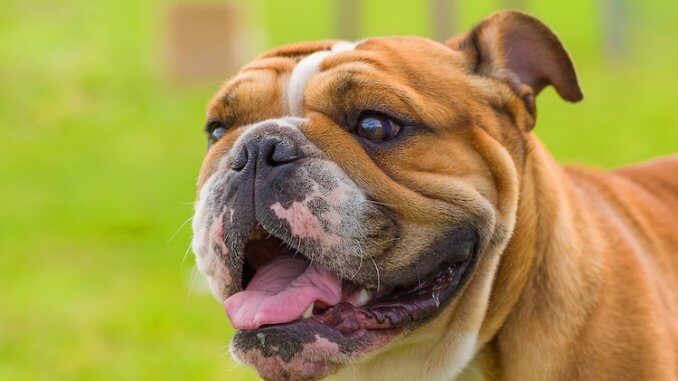
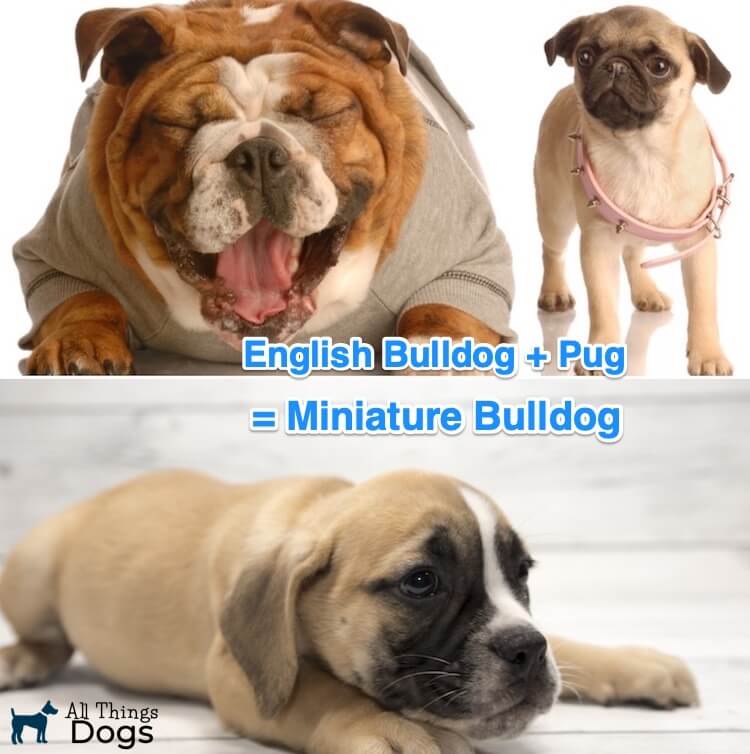
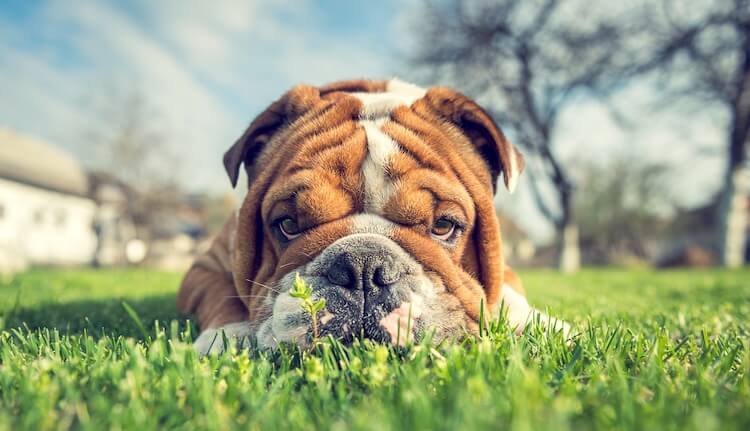
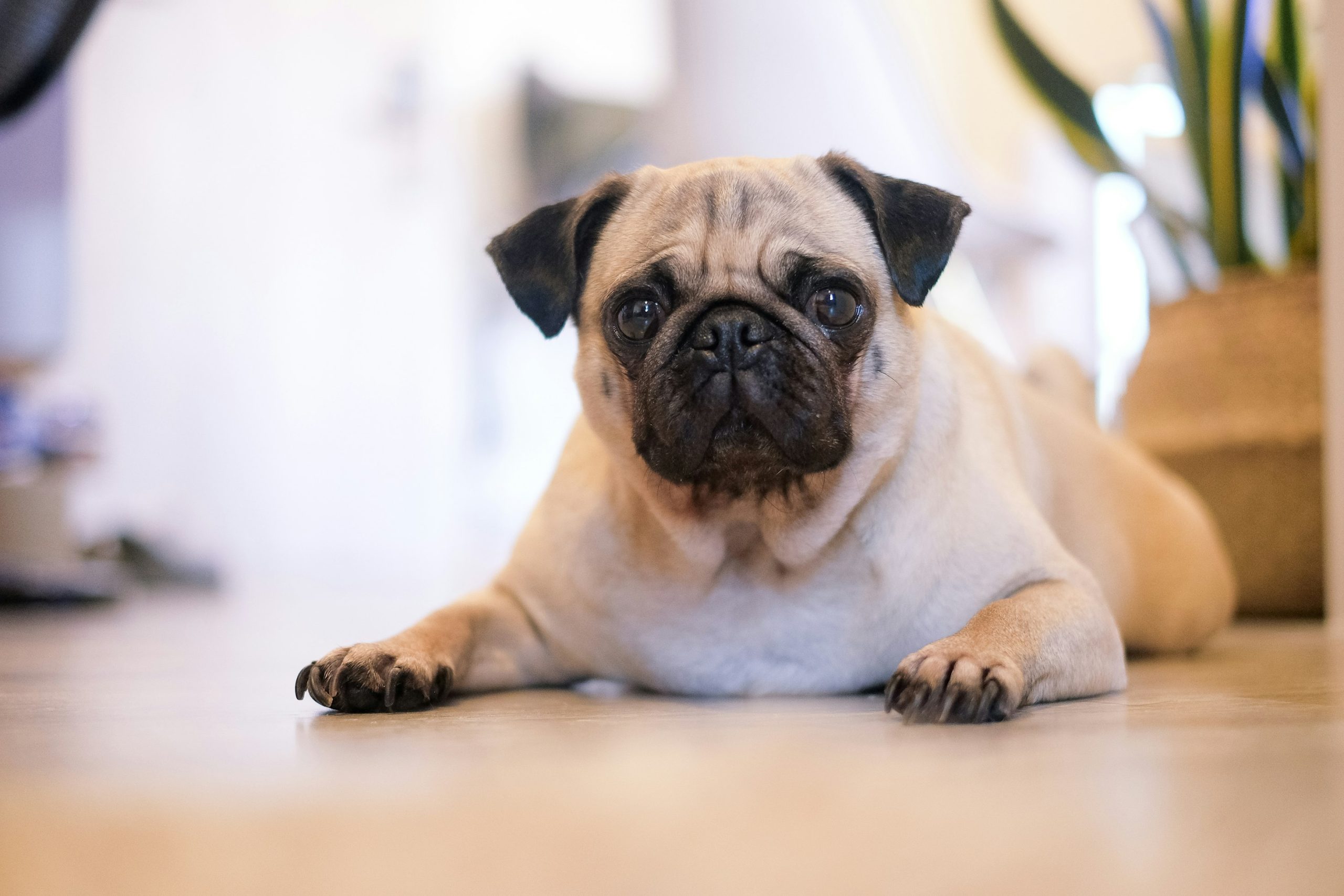
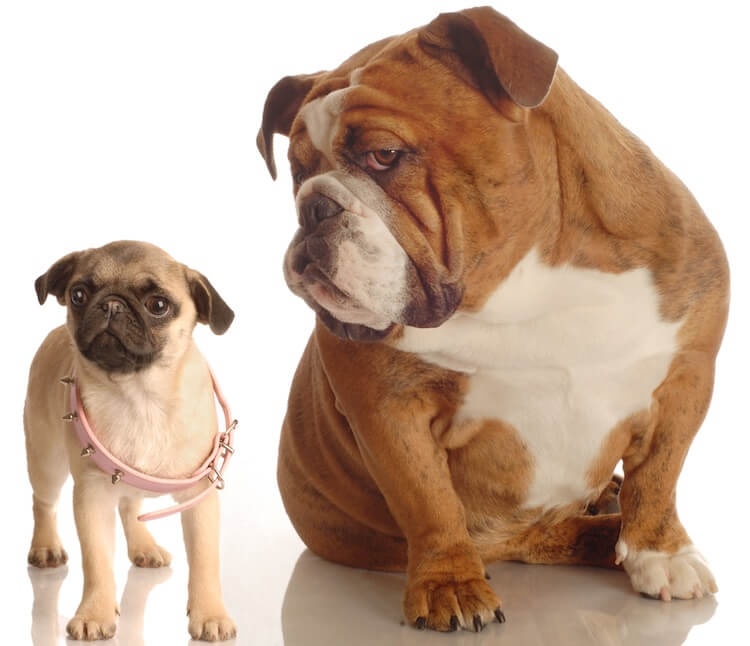
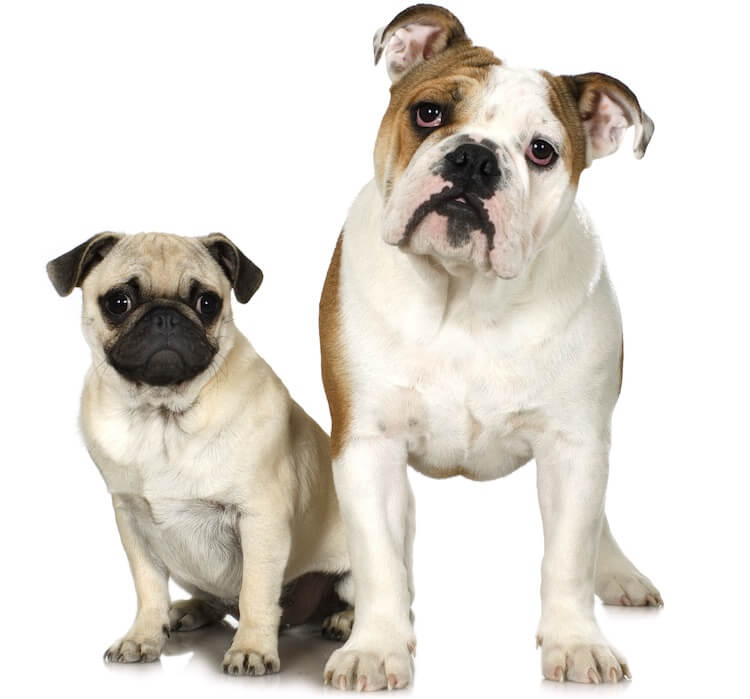

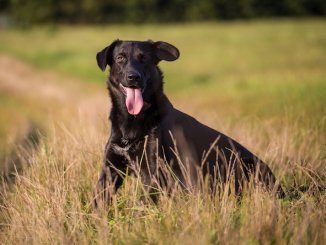
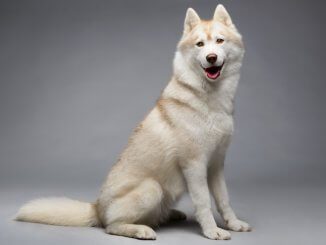
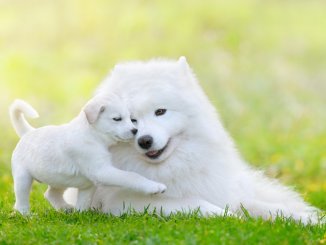
I am looking to have my dog trained as an emotional support dog, does anyone have some advice?
Very interested in this breed would love for more information on it
All the positive aspects of this breed are absolutely true. However, do not underestimate the “stubborn” aspect. Stairs could be a problem. Potty training could be a nightmare. Responding to commands, even to their name, could be a challenge. Their chewing needs as a puppy are extreme. My puppy took over amonth to finally respond to his name. He goes up the stairs on his own initiative, but is terrified to go down(although my stairs are narrow], and so I am in the process of training him by food rewards, to go down the stairs, starting from the bottom, NOT the top. He would chew the dry wall, baseboards, carpet, and all the usual puppy things, so he needs constant suppervision. He still is not potty trained at over 5 months, because I take him out minimum every 2 hours, but I can bring him in after he’s done 2 “dumps” and he may still try to do a dump immediately inside.
Yet he gets along with everything and everybody. He is beyond adorable. You will be smitten from day one, just know that training will probably take a really long time, and you need to be prepared to put in the time. Definitely need to crate train him at night at least. My puppy sleeps right through the night, no accidents.
This is only my experience. I can only compare him to other dogs, not mini bulldogs. There is a 6 month Bulldog on my street who was potty trained at 3 months, so my experience is quite subjective, and I just adore my boy. He gets along with my 170 lb. mastiff, my 9lb. chorkie, and my 10lb. cat.
PS. He needs to be trained not to pull when being walked, and bulldogs are strong. Yet training with persistence and consistency, we are overcoming the pulling. He wants to meet everyone and everything on the walk. Good luck!